.jpg)
Dacia Duster Review
.jpg)
Introduction
The Dacia Duster has been remodelled, ridding itself of clunky design, and following through on enhancing the previous models best features.
With a spacious interior layout and a growingly appealing design, this remodelled SUV brings a new challenge to the market, providing industry standard features, without the usual hefty price tag - but are these changes enough to beat it's previous iteration?
Select's rating score* - 3.7 / 5
At a Glance
In a tongue-in-cheek cover of Queen’s classic “Another One Bites the Dust”, so the Dacia TV advert sang “Another One Drives a Duster”.
As well, they might.
You see, the days where Western Europe would sneer in the faces of our Eastern European counterparts for their laughable, hapless cars are long gone.
Granted, Dacia has needed some French joie de vivre sprinkling upon it to revitalise the 55-year-old Romanian brand. But the plucky Renault-owned manufacturer has managed to catapult the Duster to become the best-selling compact SUV in Europe.
Now, this new facelifted version comes along with various improvements.
Though Dacia knows it is moons away from a Land Rover, the Duster is nevertheless marketed as a rugged, versatile vehicle that can handle rural settings and more than hold its own on the rougher stuff.
While the price tag appears to have gone up significantly, it should be taken into context. It’s mainly because the old entry-level version, Access, has been discontinued as hardly anyone leased or bought it. However, it is still reasonably priced and fits into the cheap and cheerful bracket.
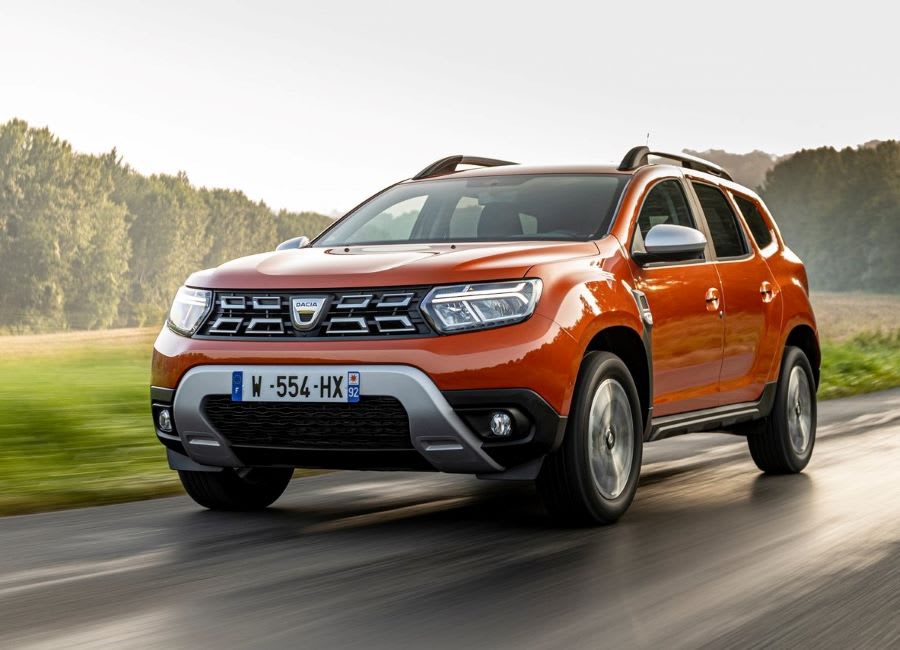
But, unlike most cheap motors, the Duster has won many admirers for its strengths. So we are hoping for more of the same with this new one.
The looks are familiar and not radically overhauled from its predecessor. But every panel on the exterior is a slightly new shape. The changes are minimised, though, as it’s still based on the same platform.
You'd be hard-pressed to spot the differences – they are there, but they're very subtle. So, if you’ve recently leased an older one, you don’t need to worry about looking like you’re driving something out of date.
The changes are more noticeable at the front, where the different coloured bumper is replaced with a black surround, while the lower grille is flatter and broader, looking more imposing.
In addition, there are new headlights, which look slightly thinner than before, while the eight chrome rectangles in the main grille have been joined together, so it seems a bit fuller. Finally, the front day-running and fog lights have been moved upwards and are housed inside a blackened plastic panel.
The shape down the side is essentially unchanged and is designed around the wheel arches, which protrude some way out of the side of the car.
At the back, the lights are the same as in the pre-facelifted version, contained in a rounded square with the reverse light positioned in the middle in a cross shape.
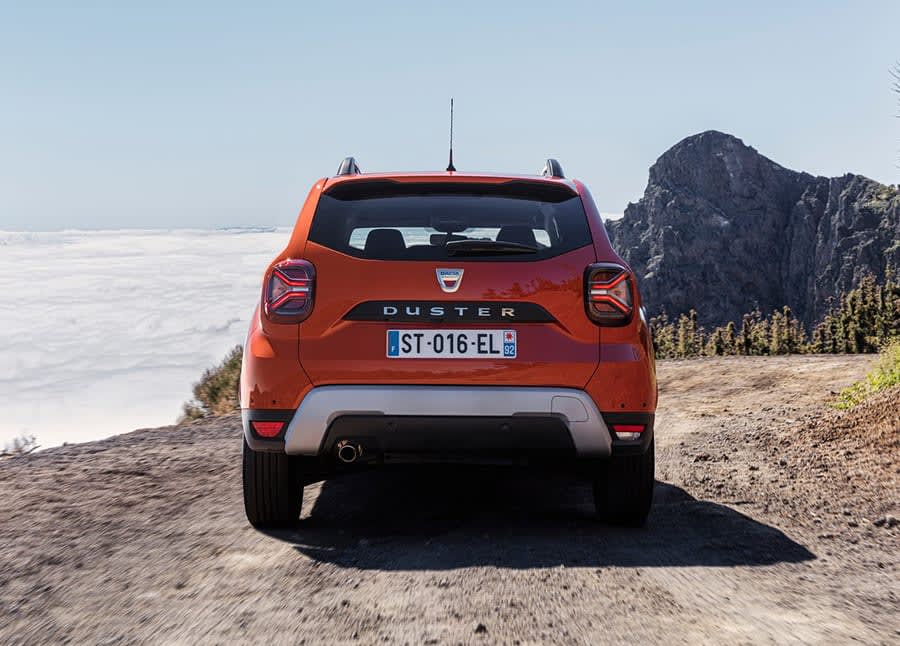
Key Features
One thing you’ll quickly realise about the Dacia Duster is that it’s not here to amaze you. Instead, it is here to get you from A to B - and nothing more.
It is not here to win awards for the best looking, best handling, quickest 0-62mph time or the prettiest interior.
With that in mind, it’s worth setting your expectations accordingly.
This Dacia model is intended to be a cheap car that, nevertheless, exceeds the quality standards that any reasonable person would expect.
The Duster has always done this very well, and early signs suggest the same is true of the facelifted version.
There are three trims to choose from.
Entry-level is Essential, which includes 16-inch steel wheels, air conditioning, a DAB radio, electric front windows, tinted manually operated rear windows, split-folding rear seats, and cruise control, plus roof bars.
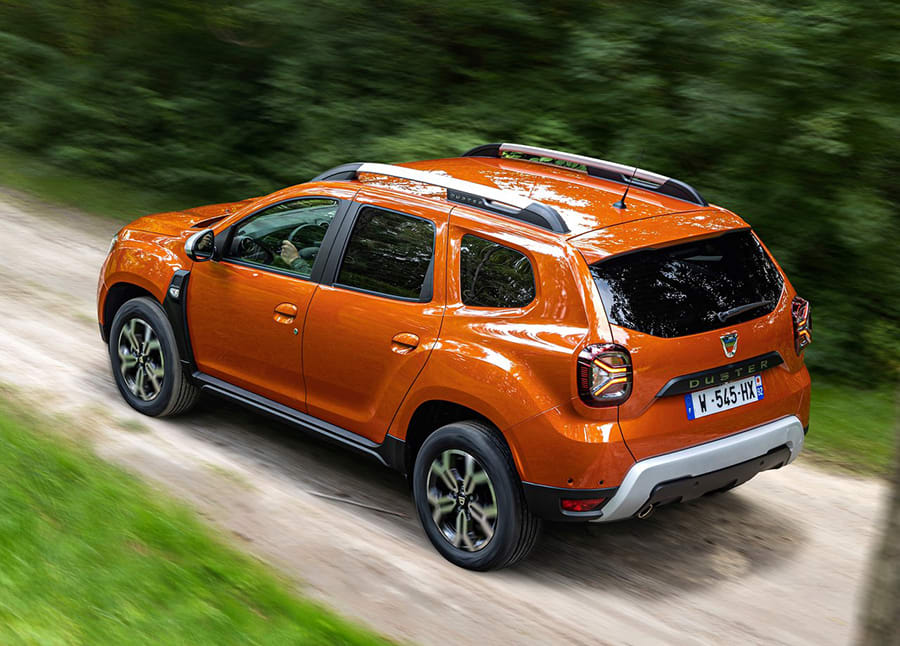
Next up is Comfort, which upgrades the 16-inch wheels to alloys and adds an eight-inch media display with wired smartphone integration, two USB sockets, a rear parking camera and driver’s lumbar support.
Prestige is top of the range, which upgrades the alloys to 17-inches, adds in SatNav and wireless phone integration, and automatic air conditioning. It also includes a multi-view camera, made up of three lenses which display an exterior view of the car on the infotainment screen so you can see what’s around you.
In terms of engines, there are numerous variants to choose from.
There are four petrols on offer, which are all turbocharged. The TCe 90 and TCe 100 are 1.0-litre three-cylinders producing 90 and 100PS, respectively. But, unusually, the latter runs on LPG (Dacia calls it 'Bi-Fuel'). Usually a third-party aftermarket conversion, the use of LPG fuel as standard extends the range of the vehicle to around 800 miles.
After that, there’s the TCe 130. This is a 1.3-litre four-cylinder producing 130PS, while the TCe 150 has the same 1.3-litre engine but unleashes 150 horses - and is the only one that comes with an automatic gearbox.
There is one diesel engine - the Blue dCi 115. It is a 1.4-litre four-cylinder unit, which produces 115PS, and comes with a choice of two-wheel or four-wheel drive.
The entry-level Essential trim is only available with the TCe 90 and TCe 100 petrol engines. If you want anything else, then you must opt for Comfort trim, although we wouldn't recommend you go for the Essential grade in any case.
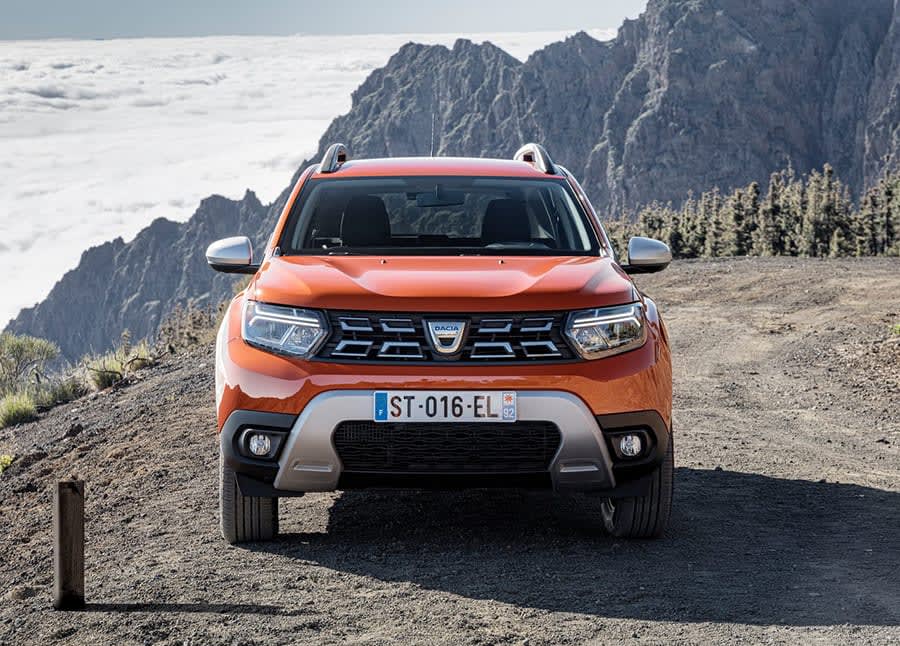
Performance & Drive
The Duster is not a car to opt for if you want to quickly get where you're going. Depending on which engine you choose, 0-62mph times range from 9.7 to 13.8-seconds. Nevertheless, for getting around town and commuting at rush hour, it’s perfectly adequate.
The Bi-Fuel LPG engine provides a little bit more grunt lower down the rev range, but this isn’t a car that’s going to fly off the line as soon as the traffic lights go green.
Ride comfort is good, thanks to the higher-profile tyres and a soft suspension setup. This means it absorbs bumps well, although it can feel a bit bouncy over rougher terrain and poorly maintained road surfaces.
The steering is effortless, but it’s so light that it limits the amount of feedback, so you feel unable to drive with as much precision as with some rivals. But it still corners admirably well, with minimal body roll in the bends, given it’s a reasonably tall vehicle.
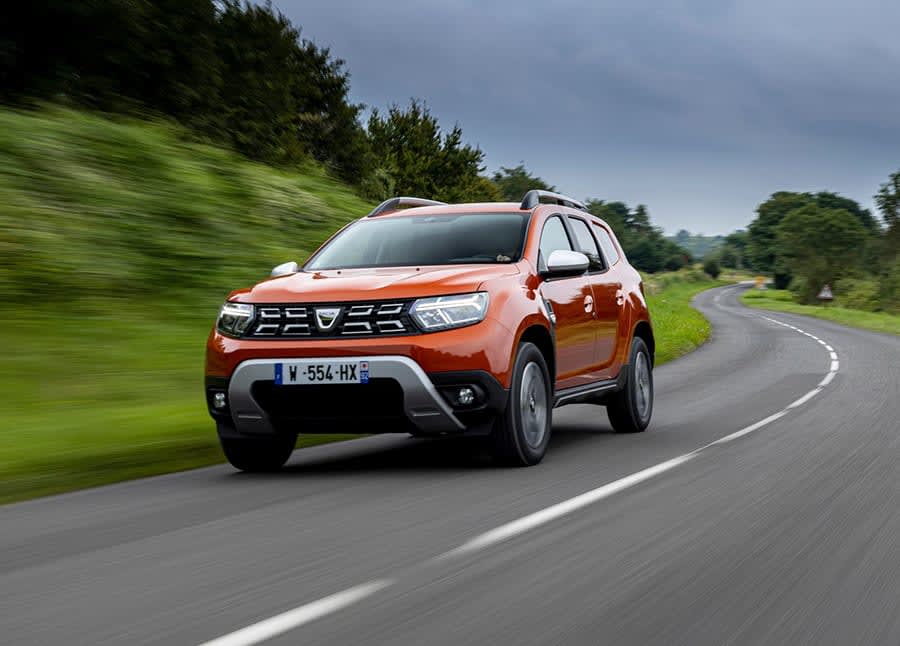
There is a bit of road noise from the tyres, while wind noise is also evident at times. But it’s not overbearing and can be drowned out well by the radio.
In terms of excitement, there isn’t any sense of occasion when driving the Duster. It doesn’t even attempt to be especially engaging to drive. The model is very much an A to B car that’s tiny on price and big on practicality. As long as you channel your expectations accordingly and don’t go thinking you’re getting Land Rover quality at a knock-down price, you’ll be impressed.
The 4x4 version will also go off-road on the rough stuff and can handle angled ridges and crests well. Adaptive hill-descent control will operate the accelerator and brake off-road in first gear and reverse, keeping the speed between 3-18mph depending on what you've selected so that you can concentrate on the steering.
In all honesty, the diesels aren’t great, but you’re stuck with them if you want four-wheel drive. Thanks to the limited rev range, you're constantly changing up, but this has an upside as it means the Duster is suited to off-roading. The need to short-shift up through the gears is also reduced if the car is heavier, so if you are towing or lugging heavy cargo about, you’ll likely be okay.
If you’re going to be using the Duster on normal roads with just you in it most of the time, then the petrol is best. However, if you want an automatic to make life easier, you must have the petrol anyway. It is a decent gearbox that changes smoothly, in part thanks to a dual-clutch system, which always has the next gear ready for a quick changeover.
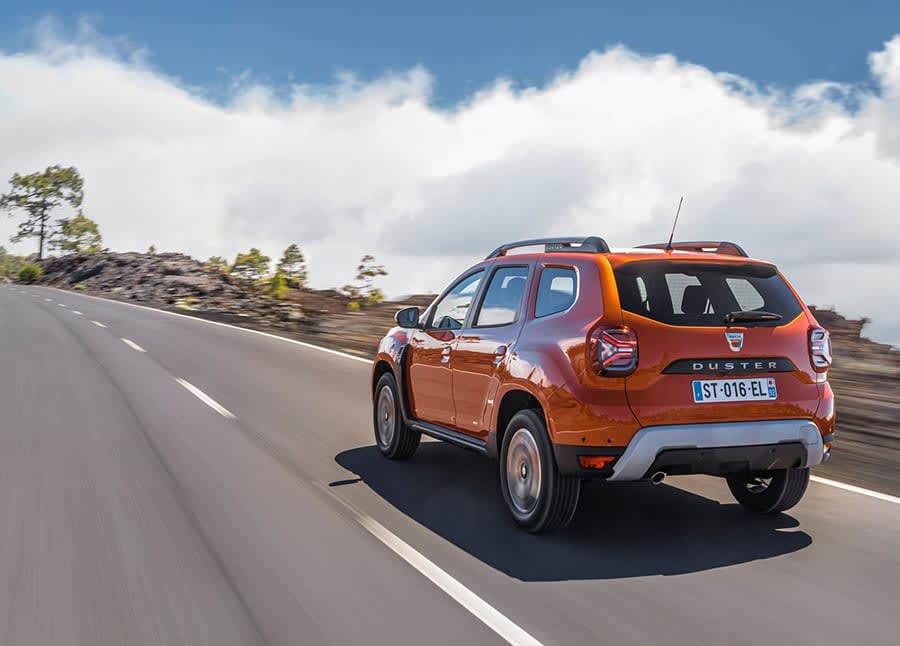
Running Costs & Emissions
The TCe 90 achieves 45.6mpg, producing 140g/km of CO2.
This reduces to 44.1mpg in the TCe 100 (which shrinks further to 40.9 when in LPG mode).
The TCe 130, however, achieves 45.6mpg – the same as the lower-powered 90PS engine – and only a tiny amount more CO2 at 141g/km.
The TCe 150 is only slightly worse still, at 44.8mpg and 142g/km CO2.
Given these figures, you can opt for the range-topping engine while achieving almost the same fuel economy and emissions level as the entry-level.
As for the diesel, the Blue dCi 115 diesel manages 57.6mpg (127g/km CO2) in two-wheel drive format, dropping to 53.3mpg (139-140g/km CO2) if you choose the four-wheel-drive version.
Dacia has performed admirably in recent reliability and customer satisfaction surveys - and the Duster isn’t the most expensive car in the world to maintain.
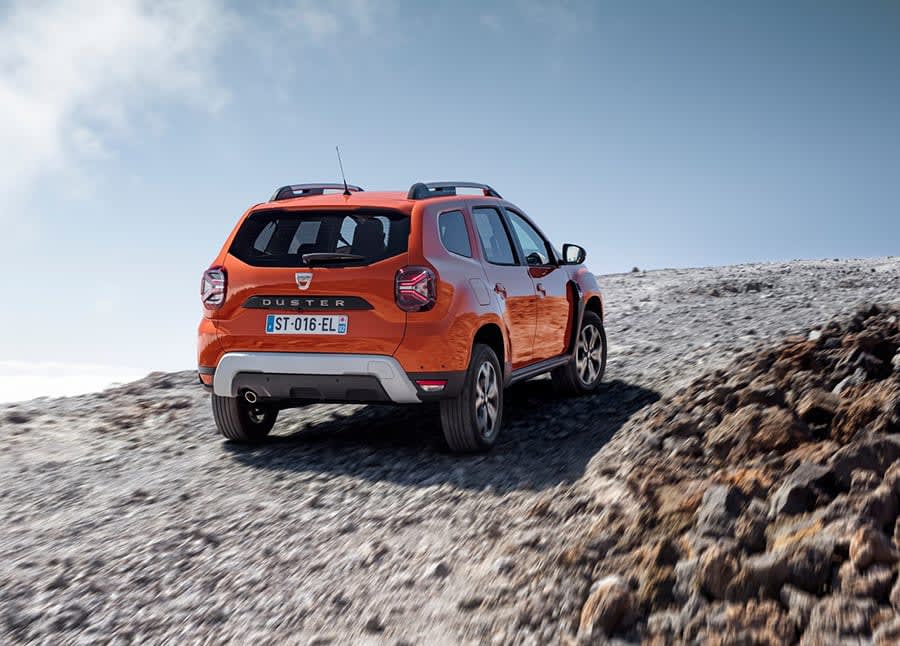
Interior & Technology
The overhauled dashboard that was introduced when the second-generation Duster launched back in 2017 remains.
Indeed, a range of improvements were made for this generation, including new seats, thicker glass to improve soundproofing, a new infotainment system and various changes to materials to stop rattles and enhance rigidity.
In this facelifted version, the centre console has been given a makeover, too, while the seats are even comfier and offer more support.
There is a very plasticky feel to the interior still, but at no point does it look or feel utilitarian.
In fact, despite the hardened plastics coming at the expense of plush, soft-to-the-touch surfaces, it still looks reasonably attractive.
Circular air vents and the steering wheel, both of which are garnished with silver trim, help to break up the darkened interior, preventing it from looking overly monotonal.
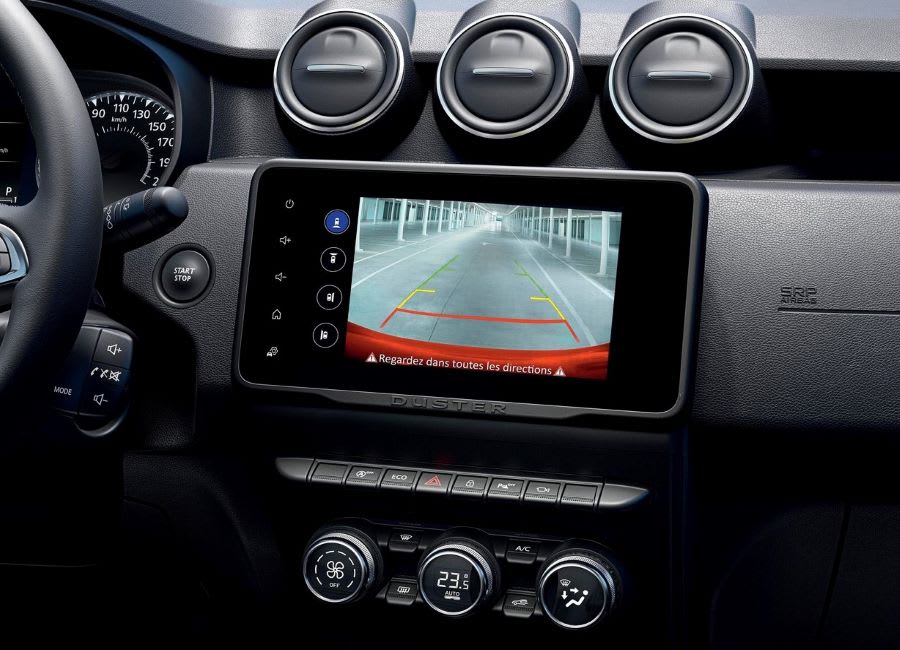
The infotainment system (slightly bigger than the pre-facelifted version) sits on the dash like a tablet, with Apple CarPlay and Android Auto included. At the same time, rotary dials operate the air conditioning, with buttons logically placed.
The upholstery is dark, which, from a distance, hides the fact that it’s all cloth. However, a decent job has been done to make it look appealing.
Top-of-the-range Prestige trim gets SatNav, although it’s basic and doesn’t give you any live traffic information. So don’t expect it to get smart and divert you around accidents.
Overall, the Duster’s interior does feel a little lacking compared with more expensive rivals. Then again, we cautioned earlier about managing expectations and, for the price of the vehicle, it’s hard to criticise what’s on offer.
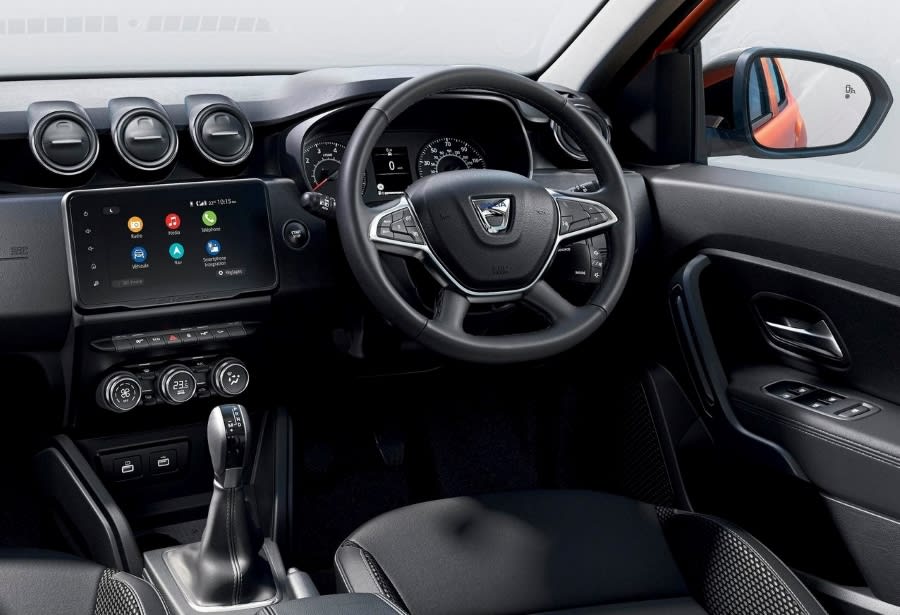
Practicality & Boot Space
The seats are comfortable, if somewhat basic. But there's plenty of space in the cabin, so you don't feel hemmed in.
There’s a reasonable amount of storage space, too, with four-door bins providing an average amount of room, as well as a decent-sized glove compartment, which also has a shelf above it.
The new centre console now features a sliding armrest which opens to reveal more storage space underneath, while USB ports are included too (although these aren’t USB-C).
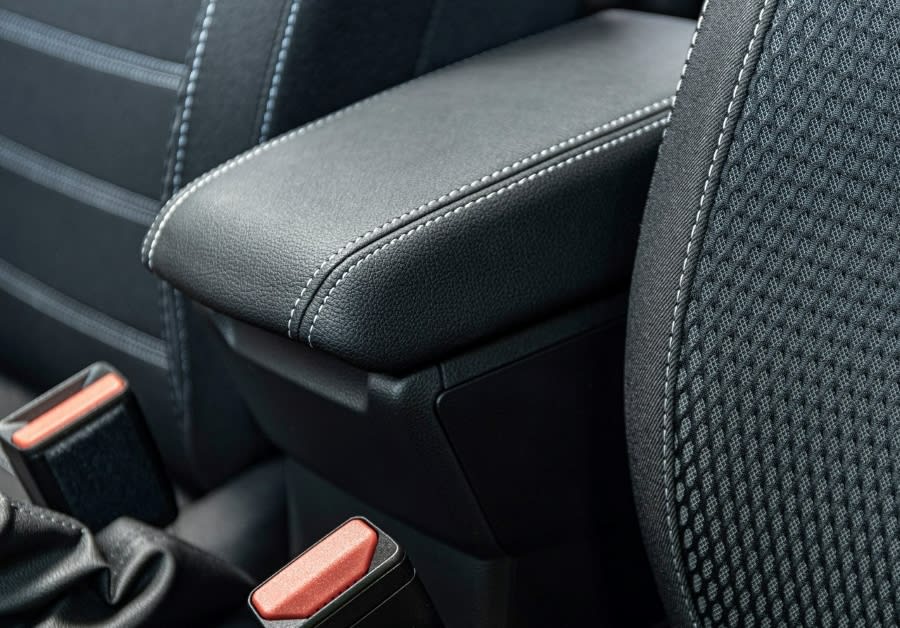
There is enough room in the rear for three adults, and the seats are comfortable, although a lot of the ride comfort seems to stem from the enormous tyres fitted to the Duster.
There are 445-litres of space in the boot, expanding to 1,478-litres with the rear seats out of the way – they fold down in 60/40 configuration. The capacity drops to 411-litres (expanding to 1,444-litres) in four-wheel-drive versions. You'll lose around 20 per cent of this, though, if you opt to have a spare wheel.
When putting the rear seats down, they still stick up at quite an angle, so pushing items all the way, so they’re touching the back of the rear seats is a bit tricky.
The boot lip isn’t too big, but it still makes lifting heavier and bulkier items in and out a little tricky.
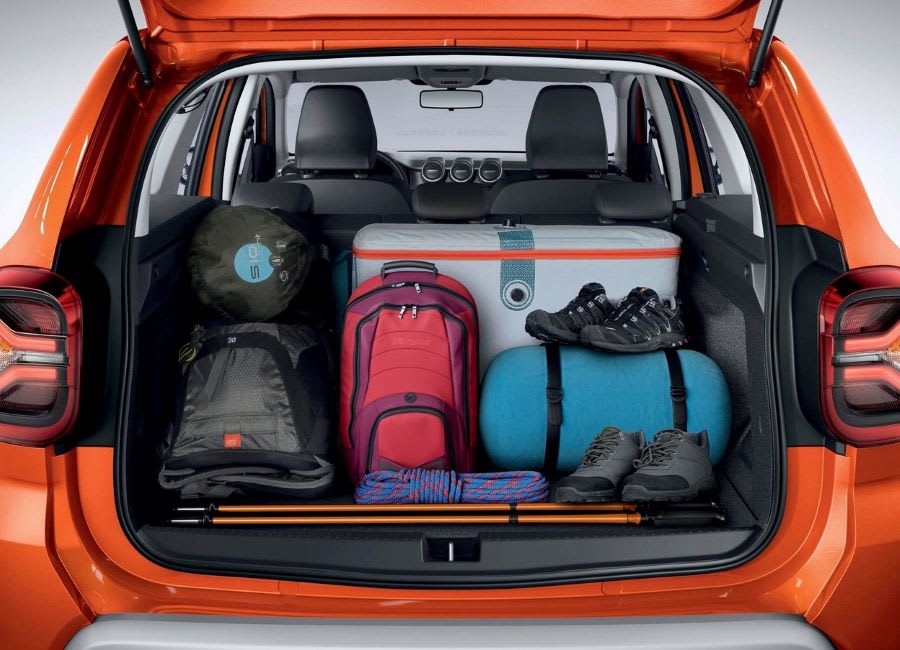
Safety
Euro NCAP tested the Dacia Duster in 2017 when the current second-generation model was first launched.
It only achieved a three-star rating, scoring 71 per cent for adult occupants, 66 per cent for children, 56 per cent for pedestrians and vulnerable road users, and only 37 per cent for safety assists.
In reality, it’s the latter score that has cost the Duster a star or two here because there isn't the level of technology on it that we've come to expect in modern-day cars.
Then again, all this tech costs money – and the Dacia wouldn’t be able to keep the price so low if it packed lots of technical gizmos into the cabin.
You still get half a dozen airbags, while hill-start assist and park assist are now included (the latter displays a rear-camera image on the infotainment screen so you can see where you’re reversing, with graphical and audible guidelines).
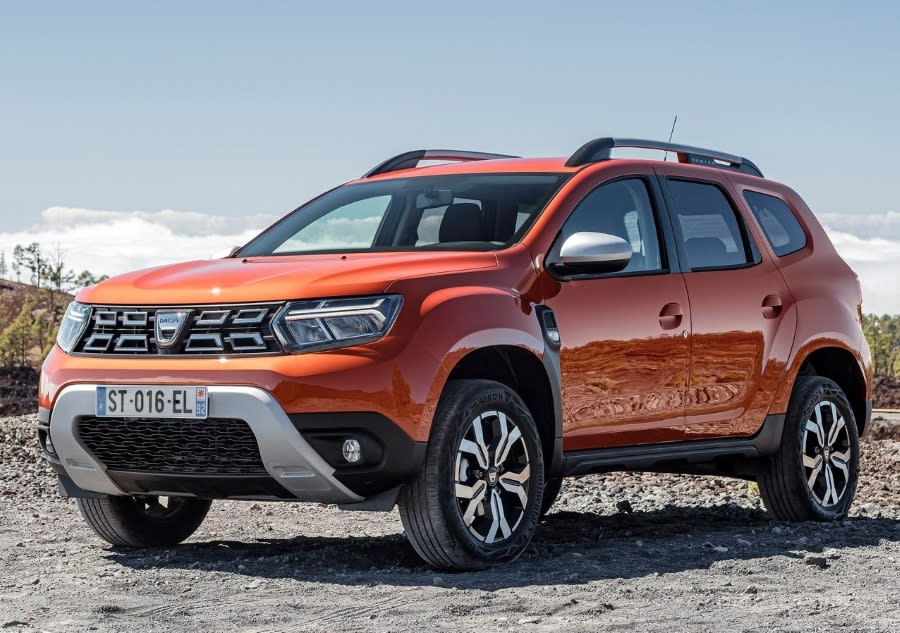
But there are no features that we’ve come to expect from most cars nowadays, such as blind-spot alert, lane-keep assist, traffic sign recognition or cross-traffic alert.
Should this put you off? Well, it’s best to think about it this way: if you’re currently driving around in a car that’s more than five or six years old today, the chances are your vehicle doesn’t have any of this stuff either. And does it make you feel unsafe?
Given the new Duster is a facelifted version of the 2017 model and, in terms of safety kit, nothing has changed, it’s likely it won’t score any better if it’s re-tested (in fact, it might score lower, as Euro NCAP toughened its safety criteria in 2020).
Yes, by today's standards, a three-star rating is poor, but it doesn't mean the Duster is unsafe by any means.
Options
There is one option for the Dacia Duster. We've already mentioned it. It's a spare wheel.
It costs very little, but, as we said earlier, it'll reduce your boot capacity somewhat.
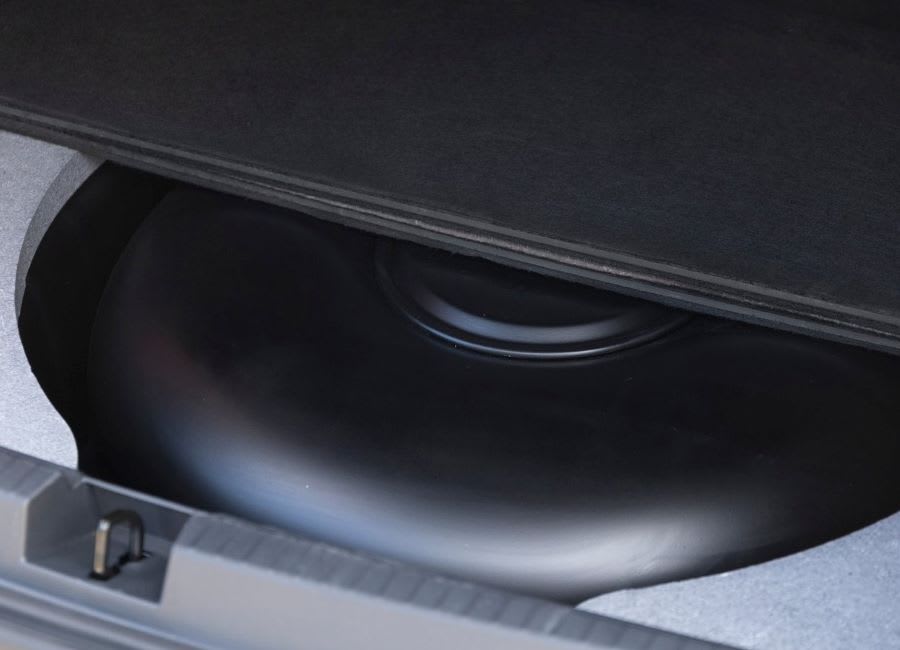
The lack of options is just to keep things simple. When you’ve got extra parts knocking about all over the place, there are all sorts of arrangements that must be made to accommodate them, both in terms of logistics, manufacturing and design.
Not including them has helped Dacia keep some uniformity to the production line, which helps keep its costs low.
In terms of body colour, the Duster comes with solid white paint by default. But, for an extra fee, you can upgrade to iron blue, fusion red, highland grey (light grey), slate grey, Arizona (orange) or pearl black.
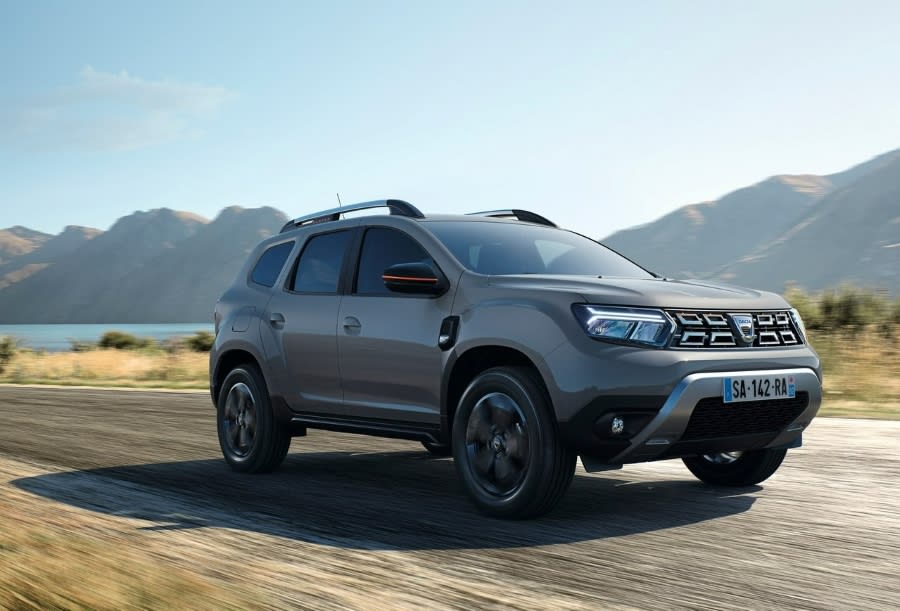
Rival Cars
Because of its low price, it's challenging to know what to compare the Dacia Duster with.
There are small hatchbacks that are more expensive, after all.
If you’re looking for something of a similar size, the MG ZS is the only other small SUV that competes with it in terms of price.
A Jeep Renegade, Kia Sportage or Suzuki Vitara are comparable in size and shape, but all are significantly more expensive.
The Nissan Qashqai and Ford Kuga are even more pricey.
Nevertheless, those are likely to be the alternatives worth considering.
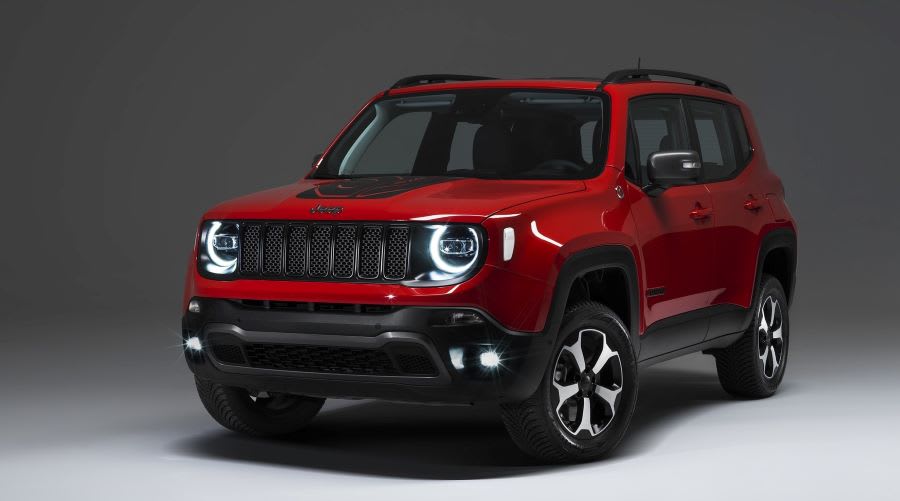
Verdict & Next Steps
Overall, the Dacia Duster is a loveable underdog.
At an attractive price, it's excellent value for money because it’s practical, roomy, returns decent fuel economy and exceeds the standards you’d expect of its price tag in every conceivable way.
It isn’t cheap due to rubbishness – far from it. It's punching above its weight, and the word “overachievement” is not an understatement, given how low it’s priced.
Using many off-the-shelf components within the Renault group, it’s been able to keep expenditure low.
The interior is relatively basic; the safety kit is a bit lacking by today's standards, and, to drive, it’s not quick. The handling isn’t class-leading by any means, but the class leaders cost a considerable amount more to lease.
But you get a lot of car - and a good one at that for the price you pay.
Financially, it's a cheap car. But, Standards-wise, it's anything but.
Where to next?
View latest Dacia Duster leasing deals - from just £258.05 per month inc VAT**
Looking for a great leasing deal? Check out our incredible range of car lease deals
New crossover SUV? Read our latest Car Reviews and find the right model for you
Want to know more about leasing? Take a look at our comprehensive Leasing Guides
Interested in everything motoring? Why not catch up on all the latest Car Leasing News.
**Score based on Select’s unique meta score analysis, taking into account the UK’s top five leading independent car website reviews of the DS 4
**Correct as of 23/11/2021. Based on 9 months initial payment, 5,000 miles over a 48 month lease. Initial payment equivalent to 9 monthly payments or £2,322.45 Ts and Cs apply. Credit is subject to status.
.jpg)




















